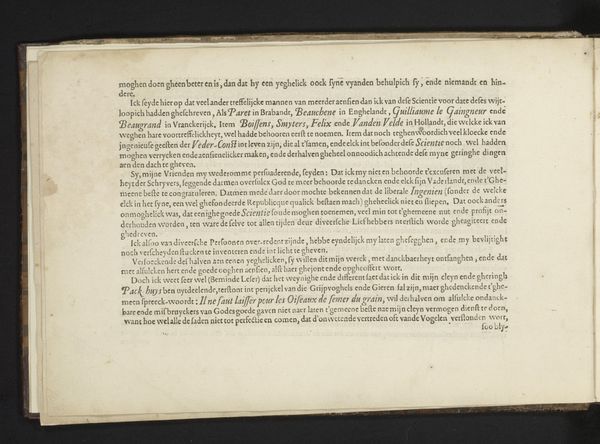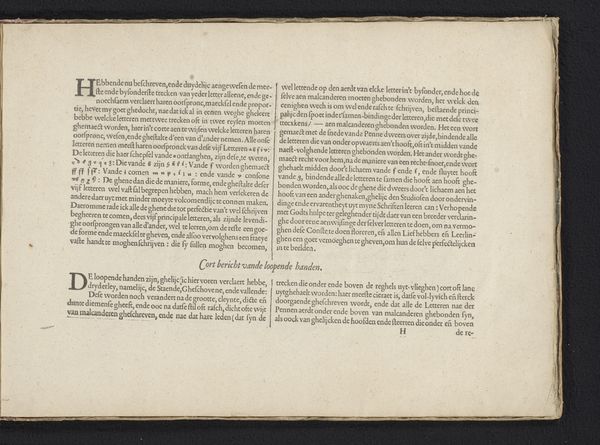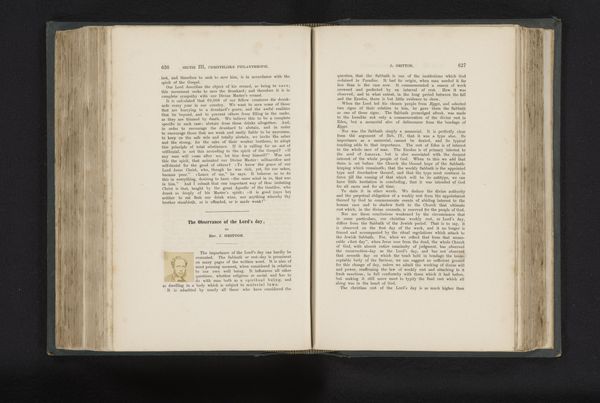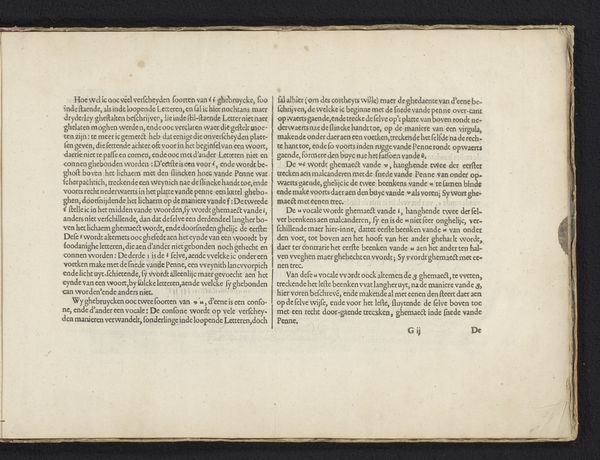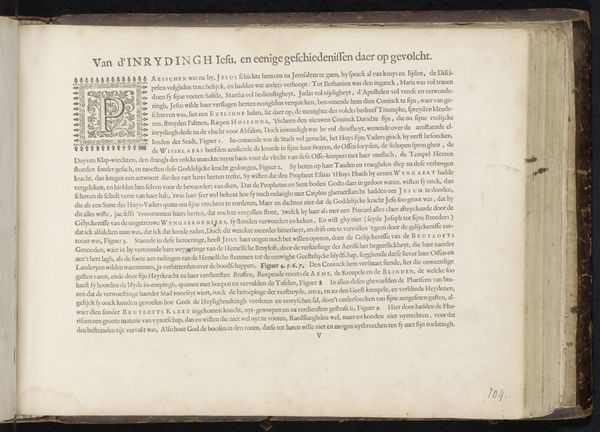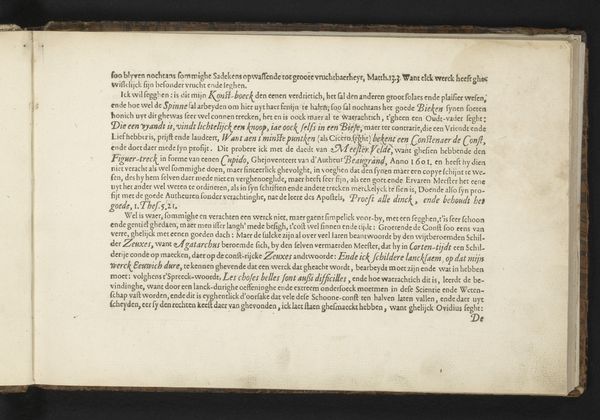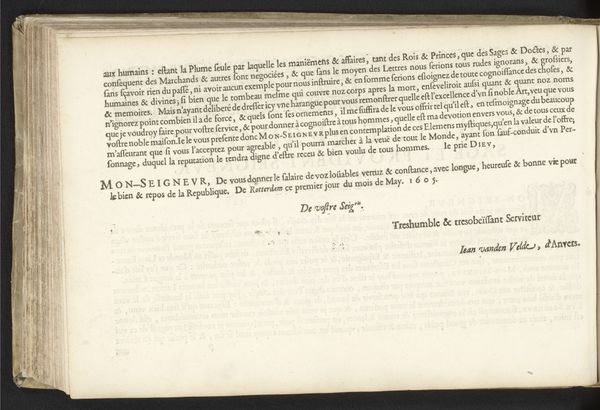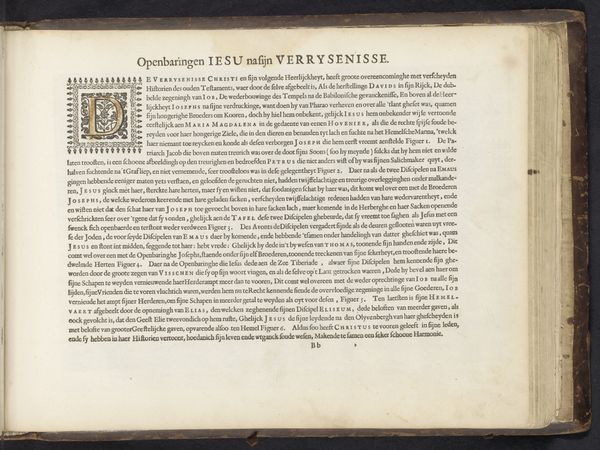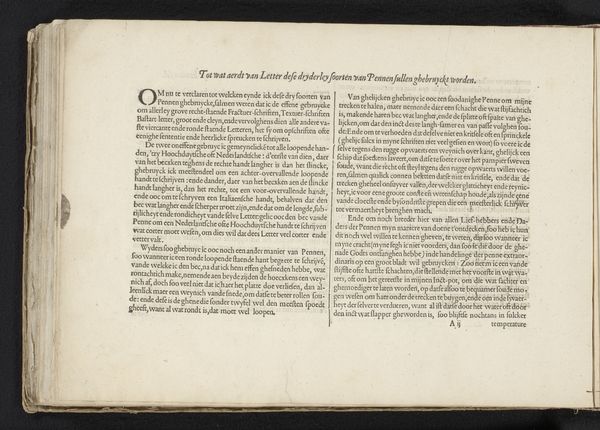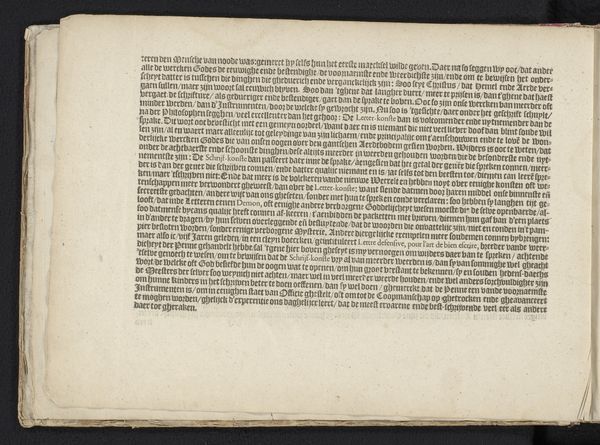
#
aged paper
#
toned paper
#
homemade paper
#
ink paper printed
#
paperlike
#
sketch book
#
personal sketchbook
#
sketchbook drawing
#
sketchbook art
#
watercolor
Dimensions: height 260 mm, width 335 mm
Copyright: Rijks Museum: Open Domain
Curator: This is the opening page, or introduction, from Hans Vredeman de Vries’s *Inleiding: Tot den cunstverstaenden leser,* printed in 1578. The piece is held at the Rijksmuseum. Editor: The text, surrounded by so much visible paper aging, it’s gorgeous, like peering through a window into another time. The composition is tight, the gothic letterforms possess this imposing authority—definitely not a casual read. Curator: Absolutely. What is particularly interesting about this printed work, however, is its function beyond pure aesthetics. The text serves as a preface, aiming directly ‘To the art-understanding reader’—a call for a specific type of engagement. Consider that print production was burgeoning at this moment; therefore the artist himself sets up an invitation for a relationship with the reader and architect, guiding its user. Editor: It's interesting you mention the artist using the architecture as a call-and-response, because there is definitely some calligraphic quality here to my eye, a rhythm established through those contrasting thick and thin strokes. There's also a fascinating tension at play—the very precise, almost mechanically reproduced letters contrasted against the very evident material qualities of handmade, aged paper. The imperfections only deepen the intrigue of its visual experience. Curator: The texture is very crucial, since De Vries used drawing as his technique for thinking through ornamental patterns. Also remember, De Vries wrote as an architect in the wake of the Reformation, at a time of strict, orthodox artistic interpretations of visual imagery. But he produced drawings to offer freedom in how artisans constructed new iterations. Editor: Which speaks to a critical detail: How the medium of printing, through techniques of reproducing and circulating images, shaped design practices in Northern Europe. In a sense, what we’re experiencing here is not just a static work, but an echo of a dynamic, transformative period in art history. Curator: Indeed, seeing these pages now, knowing what went into its dissemination, provides fresh perspectives onto the consumption and understanding of architectural practice at the time. Editor: Agreed. Examining the interplay between formal elements, as well as their material history allows us to enrich and enhance what it meant, and could still mean, to the craft-loving reader.
Comments
No comments
Be the first to comment and join the conversation on the ultimate creative platform.
